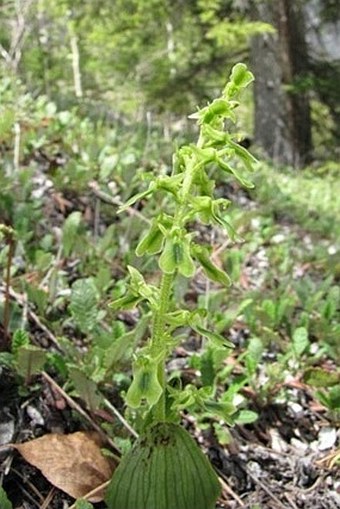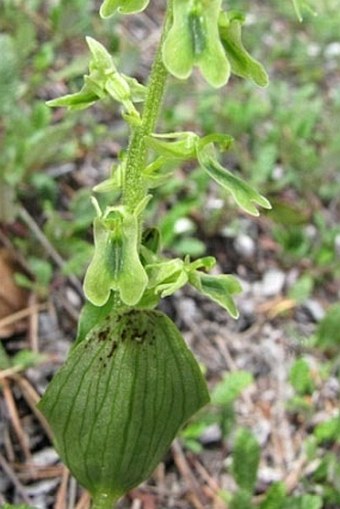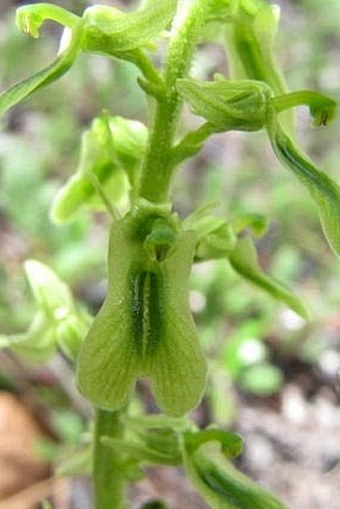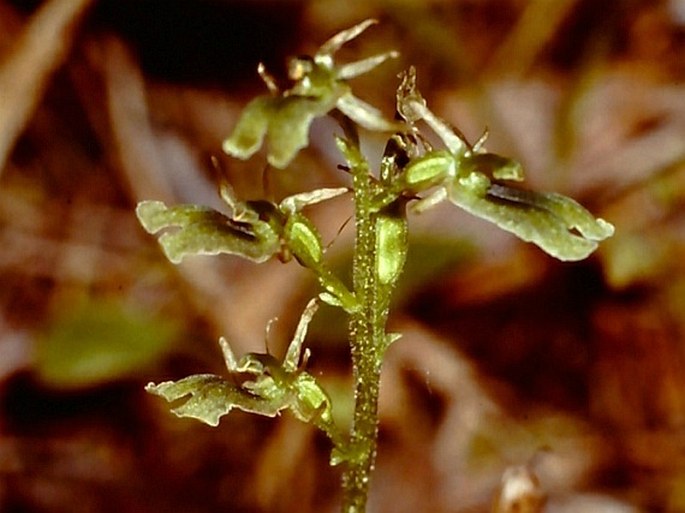Syn.: Neottia borealis (Morong) Szlach., Ophrys borealis (Morong) Rydb.
Family: Orchidaceae Juss.

Distribution: North American species found from Alaska to all Canadian provinces and some western States of US, Washington, Montana, Idaho, Oregon, Wyoming, Colorado, Utah and New Mexico.
Ecology: Moist, mossy forest, swamps, along cold streams, foothills to subalpine (1500–3000 m). Blooms in June to August.

Description: Perennial herb with slender rhizomes and fibrous roots. Stem is erect, 5–25 cm tall. Leaves 2, opposite, attached at midpoint of stem, oval to ovate-elliptic, 1–5 cm long, 0.7–3 cm wide, stalkless. Flower cluster is a raceme 5–20 flowered. Flowers are green to yellowish green, 10–18 mm long; sepals and lateral petals 4–7 mm long, reflexed, the veins conspicuous and dark green; lip oblong with 2 ear-like appendages at base, 4–7 mm long; margins pale green to whitish green. Fruit is a capsule, egg-shaped, about 8 mm long.
Threat and protection: This plant is hard to find and is locally protected as all orchid plants. Internationally it is under CITES protection.
Notes: When insects land on these flowers, they lick the nectar from a central furrow of the lip, beginning at the bottom. When they reach the top and pass the stigma, a tiny drop of sticky fluid is deposited onto the top of the forehead and the pollinium is stuck to this drop.





These images were taken in Canada, Alberta, Bragg Creek (July 1982) and Alberta, Canmore, Grassi Lake (June 2012).


